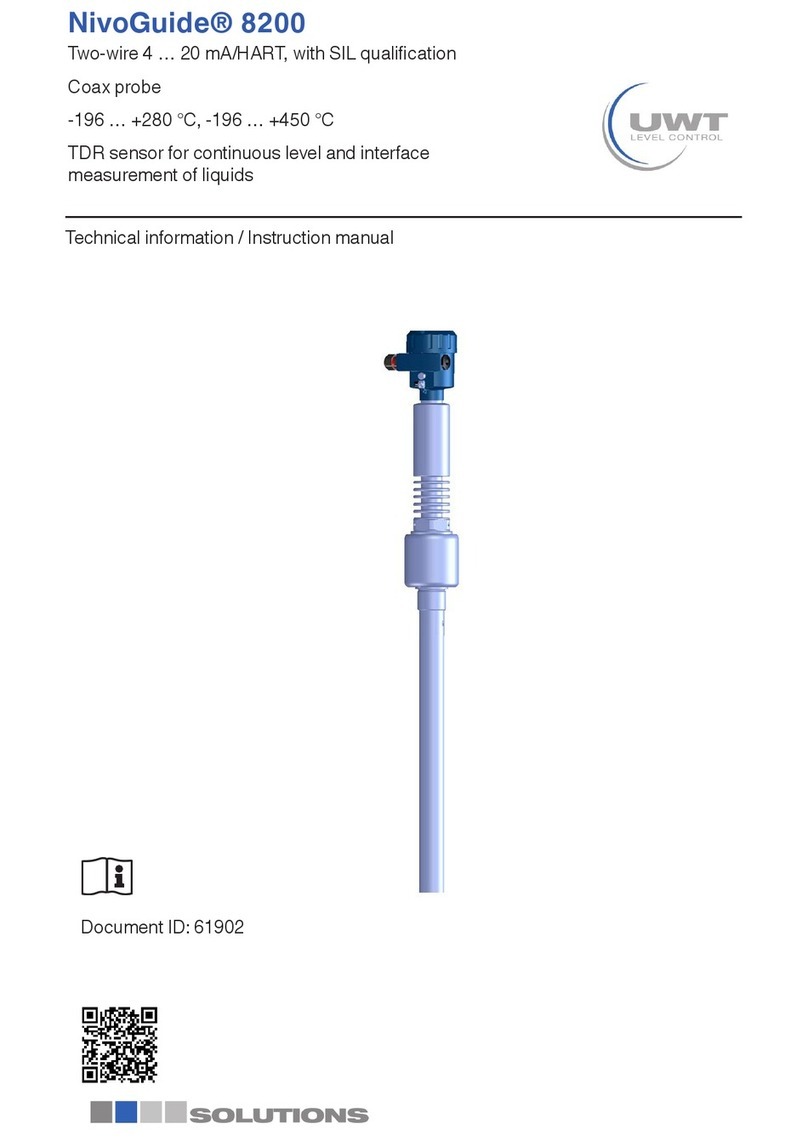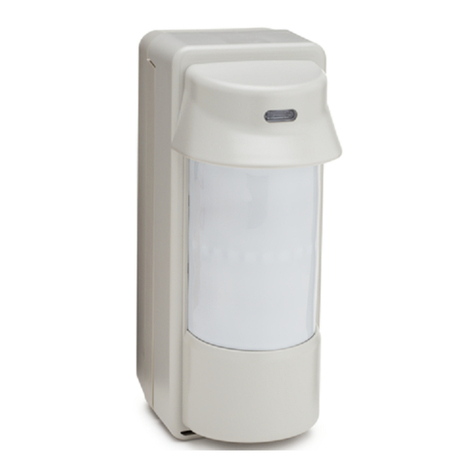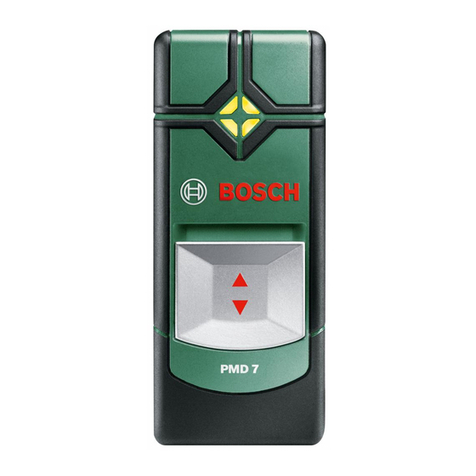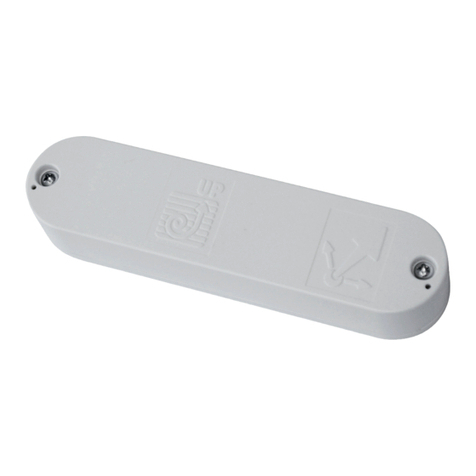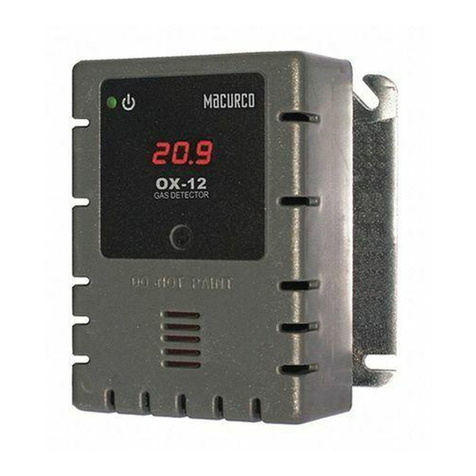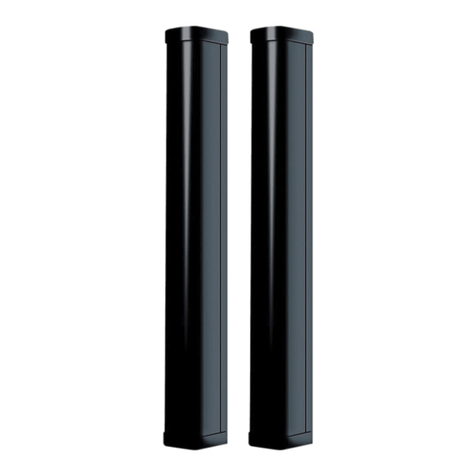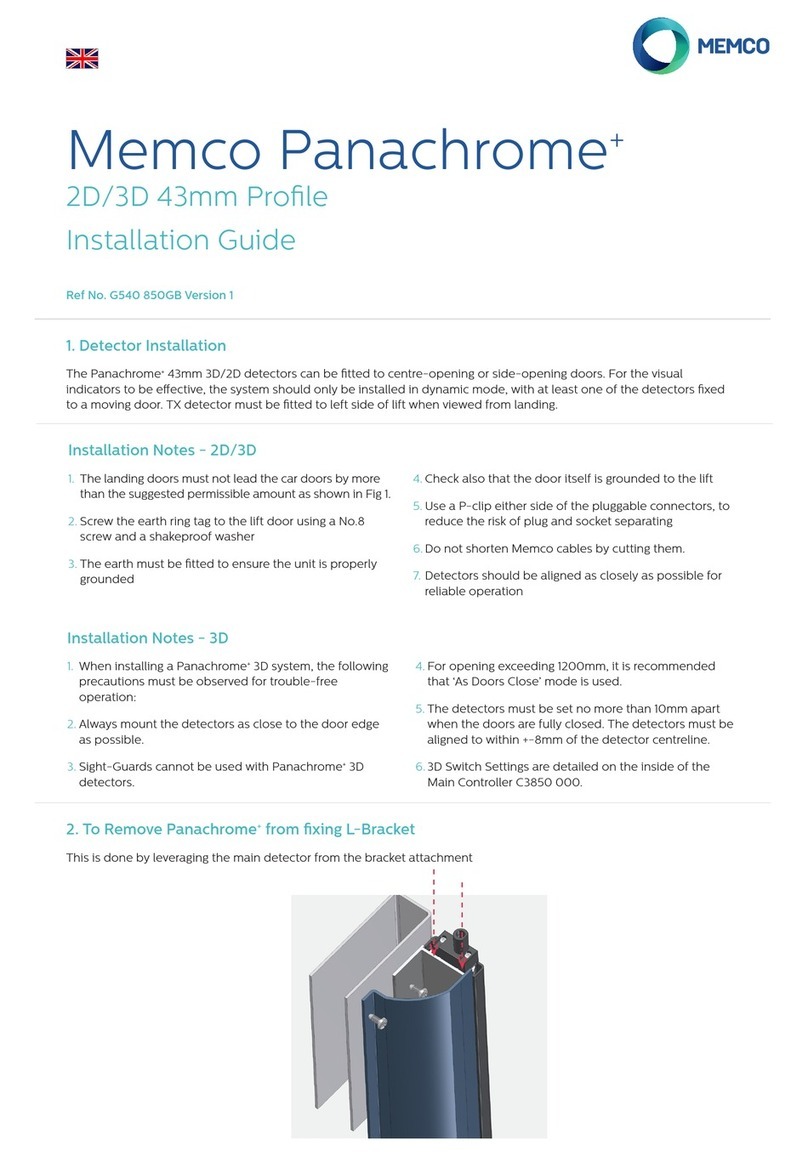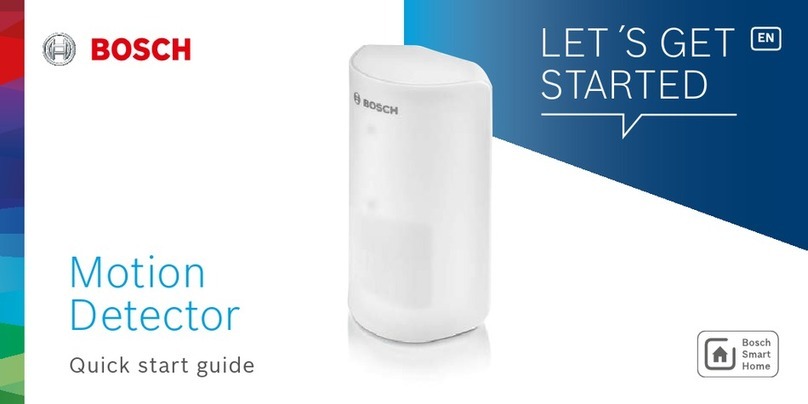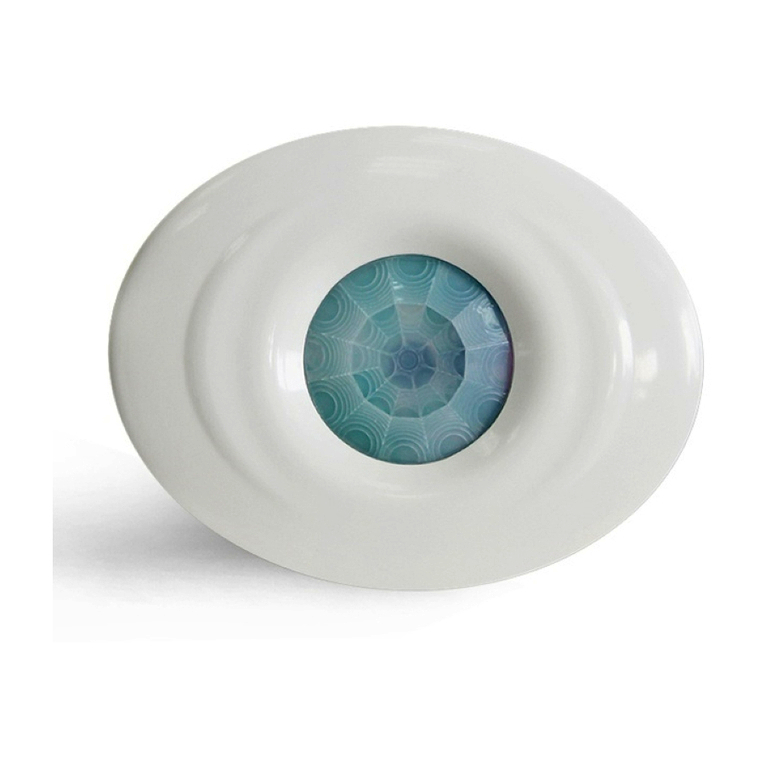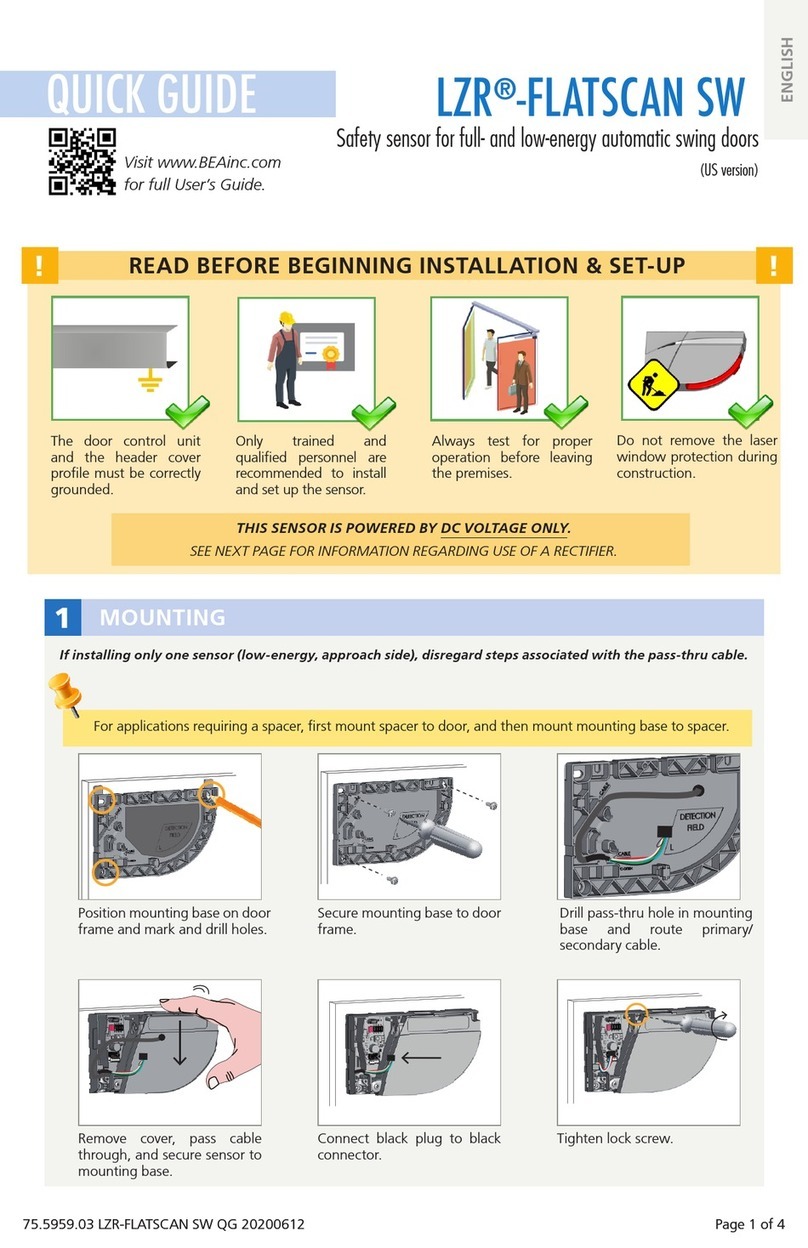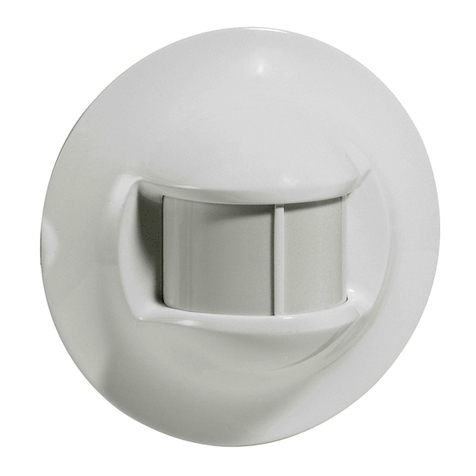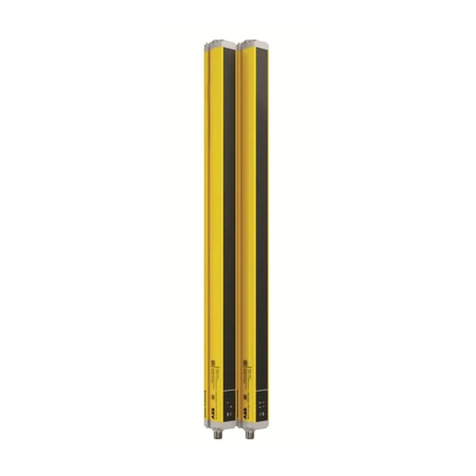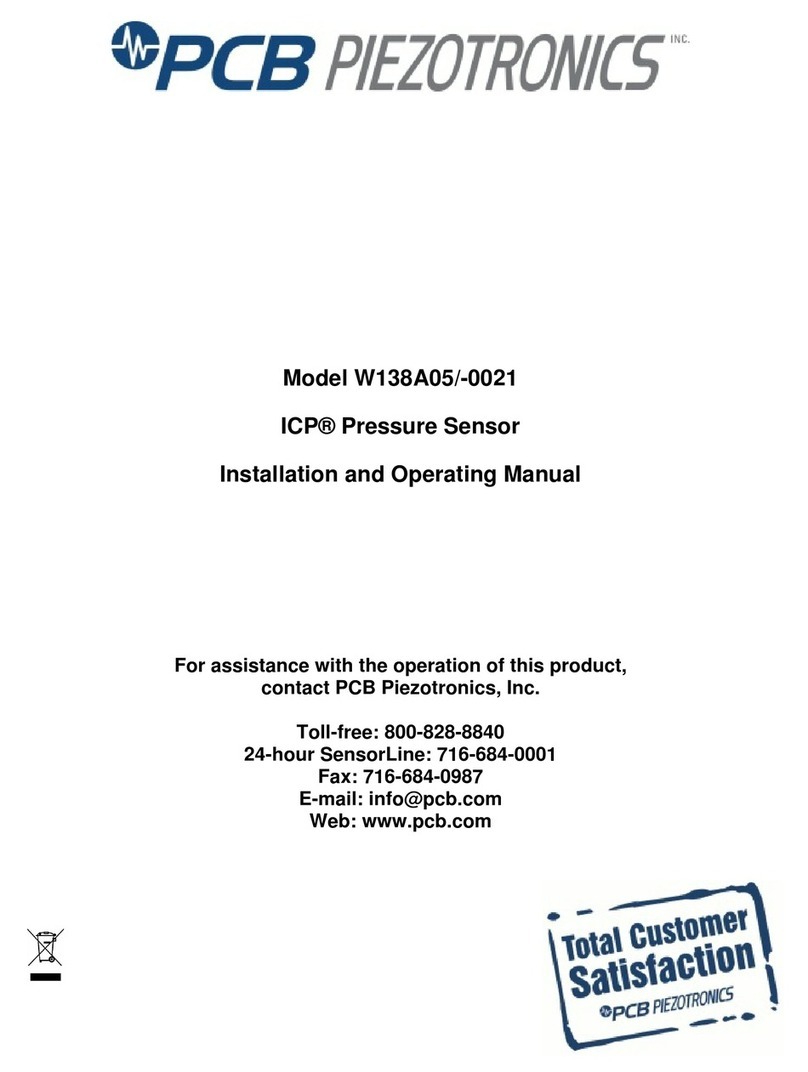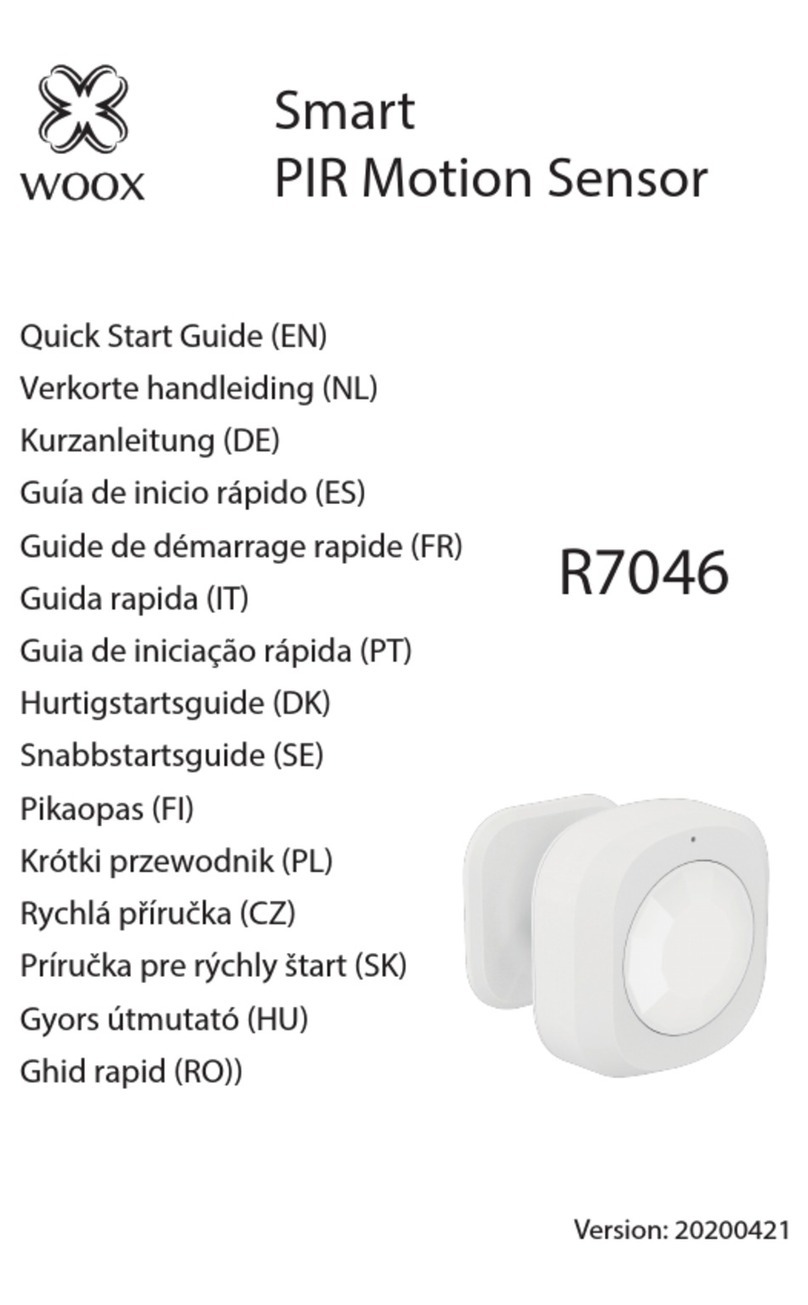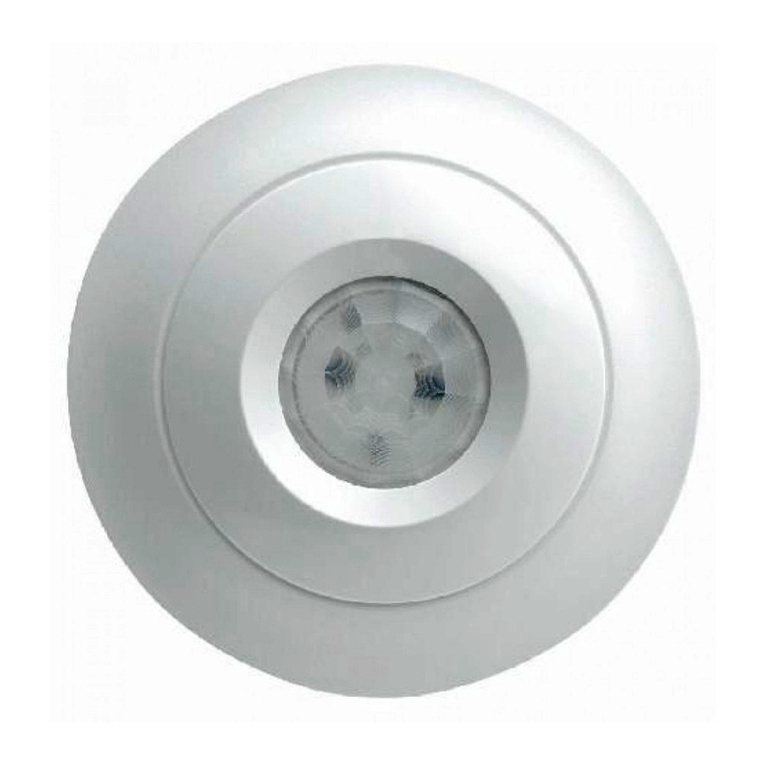Metrohm 887 User manual

887 Professional UV/VIS Detector
2.887.0010
Manual
8.887.8003EN / 2019-12-05


Metrohm AG
CH-9100 Herisau
Switzerland
Phone +41 71 353 85 85
Fax +41 71 353 89 01
www.metrohm.com
887 Professional UV/VIS Detector
2.887.0010
Manual
8.887.8003EN / 2019-12-05

Technical Communication
Metrohm AG
CH-9100 Herisau
This documentation is protected by copyright. All rights reserved.
This documentation has been prepared with great care. However, errors
can never be entirely ruled out. Please send comments regarding possible
errors to the address above.

■■■■■■■■■■■■■■■■■■■■■■ Table of contents
887 Professional UV/VIS Detector ■■■■■■■■ III
Table of contents
1 Introduction 1
1.1 Instrument description ......................................................... 1
1.2 Intended use ......................................................................... 1
1.3 About the documentation ................................................... 2
1.3.1 Modifications since previous version ........................................ 2
1.3.2 Symbols and conventions ........................................................ 2
1.4 Safety instructions ................................................................ 3
1.4.1 General notes on safety ........................................................... 3
1.4.2 Electrical safety ........................................................................ 3
1.4.3 Tubing and capillary connections ............................................. 4
1.4.4 Flammable solvents and chemicals ........................................... 5
1.4.5 Recycling and disposal ............................................................. 5
2 Overview of the instrument 6
2.1 Front ...................................................................................... 6
2.2 Rear ........................................................................................ 7
3 Installation 8
3.1 Setting up the instrument .................................................... 8
3.1.1 Packaging ................................................................................ 8
3.1.2 Checks .................................................................................... 8
3.1.3 Location .................................................................................. 8
3.2 Proposed setup ..................................................................... 8
3.3 Mounting base tray and bottle holder (optional) ............ 10
3.3.1 Removing / mounting the base tray ....................................... 10
3.3.2 Removing / mounting the bottle holder ................................. 12
3.4 Capillary connections in the IC system ............................. 15
3.5 Installing the flow-through cell ......................................... 17
3.6 Connecting the flow-through cell ..................................... 19
3.7 Connecting the instrument ................................................ 20
3.7.1 Connecting the instrument to the PC ..................................... 20
3.7.2 Connecting the instrument to the power grid ........................ 21
4 Start-up 22
5 Operation 24

Table of contents ■■■■■■■■■■■■■■■■■■■■■■
IV ■■■■■■■■ 887 Professional UV/VIS Detector
6 Operation and maintenance 25
6.1 General notes ...................................................................... 25
6.1.1 Care ...................................................................................... 25
6.1.2 Maintenance by Metrohm Service .......................................... 25
6.1.3 Operation .............................................................................. 25
6.1.4 Shutting down ...................................................................... 26
6.2 Door ..................................................................................... 26
6.3 Replacing the UV lamp ....................................................... 27
6.4 Replacing the VIS Lamp ..................................................... 30
6.5 Adjusting the lamp settings .............................................. 30
6.6 Cleaning the flow-through cell .......................................... 31
7 Troubleshooting 35
7.1 Problems and their solutions ............................................. 35
8 Technical specifications 36
8.1 Reference conditions .......................................................... 36
8.2 UV/VIS detector .................................................................. 36
8.3 Lamps .................................................................................. 37
8.4 Ambient conditions ............................................................ 38
8.5 Housing ............................................................................... 38
8.6 Mains connection ............................................................... 38
9 Accessories 39
Index 40

■■■■■■■■■■■■■■■■■■■■■■ Table of figures
887 Professional UV/VIS Detector ■■■■■■■■ V
Table of figures
Figure 1 Front ................................................................................................. 6
Figure 2 Rear .................................................................................................. 7
Figure 3 Proposed setup ................................................................................. 9
Figure 4 Connection of capillaries with pressure screws ................................ 15
Figure 5 Cell block ........................................................................................ 17
Figure 6 Connecting detector input ............................................................... 19
Figure 7 Connecting detector output ............................................................ 20
Figure 8 Intensity spectrum ok ...................................................................... 23
Figure 9 Intensity spectrum too high ............................................................. 23
Figure 10 Operating hours counter ................................................................. 27
Figure 11 Lamp module .................................................................................. 27
Figure 12 Lamp module – without UV lamp .................................................... 29
Figure 13 Flow-through cell – parts ................................................................. 33


■■■■■■■■■■■■■■■■■■■■■■ 1 Introduction
887 Professional UV/VIS Detector ■■■■■■■■ 1
1 Introduction
1.1 Instrument description
The 887 Professional UV/VIS Detector is within the 850 Professional
IC family an independent instrument for the photometric determination of
light absorbing substances in the UV/VIS range.
It can be used as an alternative UV/VIS detector with any instrument of
the 850 Professional IC, the 881 Compact IC pro, and the 882 Compact IC
plus families.
The 887 Professional UV/VIS Detector is operated with MagIC Net™
Software. It is connected via a USB connection to a PC on which
MagIC Net™ is installed. The software automatically recognizes the instru-
ment and checks its functional readiness. MagIC Net™ controls and moni-
tors the instrument, evaluates the measured data and administers it in a
database.
Additional information on operating MagIC Net™ can be found in the
document "Tutorial for MagIC Net™" or in the online help.
1.2 Intended use
The 887 Professional UV/VIS Detector is used as an independent detector
with various analysis instruments of the Metrohm line of instruments.
This instrument is suitable for processing chemicals and flammable sam-
ples. The usage of the 887 Professional UV/VIS Detector therefore requires
that the user has basic knowledge and experience in the handling of toxic
and caustic substances. Knowledge with respect to the application of the
fire prevention measures prescribed for laboratories is also mandatory.

1.3 About the documentation ■■■■■■■■■■■■■■■■■■■■■■
2■■■■■■■■ 887 Professional UV/VIS Detector
1.3 About the documentation
CAUTION
Please read through this documentation carefully before putting the
instrument into operation. The documentation contains information
and warnings which the user must follow in order to ensure safe opera-
tion of the instrument.
1.3.1 Modifications since previous version
This manual substitutes its previous version 8.887.8002EN, it includes the
following changes:
■The conditions for the adjustment of lamp settings are specified more
precisely (see "Evaluating the intensity spectrum", page 22) and (see
chapter 6.5, page 30).
■In chapter Replacing the UV lamp, page 27 the pictures were
replaced to show the new lamp module, which allows the use of the
new halogen lamp.
■Pin assignment of the analog outpot added (see chapter 8.2, page
36).
1.3.2 Symbols and conventions
The following symbols and styles are used in this documentation:
Cross-reference to figure legend
The first number refers to the figure number, the sec-
ond to the instrument part in the figure.
Instruction step
Carry out these steps in the sequence shown.
Warning
This symbol draws attention to a possible life hazard
or risk of injury.
Warning
This symbol draws attention to a possible hazard due
to electrical current.
Warning
This symbol draws attention to a possible hazard due
to heat or hot instrument parts.

■■■■■■■■■■■■■■■■■■■■■■ 1 Introduction
887 Professional UV/VIS Detector ■■■■■■■■ 3
Warning
This symbol draws attention to a possible biological
hazard.
Caution
This symbol draws attention to a possible damage of
instruments or instrument parts.
Note
This symbol marks additional information and tips.
1.4 Safety instructions
1.4.1 General notes on safety
WARNING
Operate this instrument only according to the information contained in
this documentation.
This instrument left the factory in a flawless state in terms of technical
safety. To maintain this state and ensure non-hazardous operation of the
instrument, the following instructions must be observed carefully.
1.4.2 Electrical safety
The electrical safety when working with the instrument is ensured as part
of the international standard IEC 61010.
WARNING
Only personnel qualified by Metrohm are authorized to carry out service
work on electronic components.
WARNING
Never open the housing of the instrument. The instrument could be
damaged by this. There is also a risk of serious injury if live components
are touched.
There are no parts inside the housing which can be serviced or replaced
by the user.

1.4 Safety instructions ■■■■■■■■■■■■■■■■■■■■■■
4■■■■■■■■ 887 Professional UV/VIS Detector
Supply voltage
WARNING
An incorrect supply voltage can damage the instrument.
Only operate this instrument with a supply voltage specified for it (see
rear panel of the instrument).
Protection against electrostatic charges
WARNING
Electronic components are sensitive to electrostatic charges and can be
destroyed by discharges.
Do not fail to pull the power cord out of the power socket before you
set up or disconnect electrical plug connections at the rear of the
instrument.
1.4.3 Tubing and capillary connections
CAUTION
Leaks in tubing and capillary connections are a safety risk. Tighten all
connections well by hand. Avoid applying excessive force to tubing con-
nections. Damaged tubing ends lead to leakage. Appropriate tools can
be used to loosen connections.
Check the connections regularly for leakage. If the instrument is used
mainly in unattended operation, then weekly inspections are manda-
tory.

■■■■■■■■■■■■■■■■■■■■■■ 1 Introduction
887 Professional UV/VIS Detector ■■■■■■■■ 5
1.4.4 Flammable solvents and chemicals
WARNING
All relevant safety measures are to be observed when working with
flammable solvents and chemicals.
■Set up the instrument in a well-ventilated location (e.g. fume cup-
board).
■Keep all sources of flame far from the workplace.
■Clean up spilled liquids and solids immediately.
■Follow the safety instructions of the chemical manufacturer.
1.4.5 Recycling and disposal
This product is covered by European Directive 2012/19/EU, WEEE – Waste
Electrical and Electronic Equipment.
The correct disposal of your old instrument will help to prevent negative
effects on the environment and public health.
More details about the disposal of your old instrument can be obtained
from your local authorities, from waste disposal companies or from your
local dealer.

2.1 Front ■■■■■■■■■■■■■■■■■■■■■■
6■■■■■■■■ 887 Professional UV/VIS Detector
2 Overview of the instrument
2.1 Front
1
2
Figure 1 Front
1Detector block 2Standby indicator

■■■■■■■■■■■■■■■■■■■■■■ 2 Overview of the instrument
887 Professional UV/VIS Detector ■■■■■■■■ 7
2.2 Rear
1
8
23
9 10 11 12
4
13
57
6
Figure 2 Rear
1Mains switch
For switching the instrument on and off.
I = On
O = Off
2Control connection socket
Not Used.
3Analog connection socket
Output for analog signals.
4UV connection socket
For connecting the cable of the UV lamp.
5VIS lamp connection cable 6UV lamp connection cable
7Lamp cooling element 8Mains connection socket
For connecting the mains cable.
9Service connection socket
Connection for service.
10 USB 2 connection socket
For connecting additional USB instruments.
11 USB 1 connection socket
For connecting additional USB instruments.
12 PC connection socket
For connecting the USB cable to the PC.
13 VIS connection socket
For connecting the cable of the VIS lamp.

3.1 Setting up the instrument ■■■■■■■■■■■■■■■■■■■■■■
8■■■■■■■■ 887 Professional UV/VIS Detector
3 Installation
3.1 Setting up the instrument
3.1.1 Packaging
The instrument is supplied in protective packaging together with the sepa-
rately packed accessories. Keep this packaging, as only this ensures safe
transportation of the instrument.
3.1.2 Checks
Immediately after receipt, check whether the shipment has arrived com-
plete and without damage by comparing it with the delivery note.
3.1.3 Location
The instrument has been developed for operation indoors and may not be
used in explosive environments.
Place the instrument in a location of the laboratory which is suitable for
operation and free of vibrations and which provides protection against
corrosive atmosphere and contamination by chemicals.
The instrument should be protected against excessive temperature fluctua-
tions and direct sunlight.
3.2 Proposed setup
The 887 Professional UV/VIS Detector can be used as a detector with the
instruments of the 850 Professional IC, the 881 Compact IC pro, and the
882 Compact IC plus family. For many applications with photometric
detection, a post column reaction with the 886 Professional Thermostat /
Reactor (2.886.0110) is required. To build such a system, you will need a
887 Professional UV/VIS Detector and the following instruments:
■any 850 Professional IC instrument, or
any 881 Compact IC pro instrument, or
882 Compact IC plus
■the 886 Professional Thermostat / Reactor
■optionally: a 872 Extension Module for sample preparation
■optionally, if the PCR reagent is pumped with a high pressure pump: a
Metrosep BP 1 Guard/2.0 (6.1015.100) backpressure column.
An IC system with photometric detection and post column reaction can be
set up in in various combinations (see figure 3, page 9).

■■■■■■■■■■■■■■■■■■■■■■ 3 Installation
887 Professional UV/VIS Detector ■■■■■■■■ 9
2.944.0010
2.943.0110
2.940.xxxx
2.942.xxxx
2.940.xxxx
2.942.xxxx
2.944.0010
2.943.0110
6.2061.100
6.2061.110
2.940.xxxx
2.930.xxxx
2.944.0010
2.943.0110
2.942.xxxx
6.2061.110
6.2061.100
2.930.xxxx
6.2061.120
2.942.xxxx
6.2061.100
2.944.0010
2.943.0110
6.2061.110
Figure 3 Proposed setup
Note for proposed setup
If you want to place the instruments in two stacks, we recommend you
protect the instruments of the second stack and also order the following
accessories:
■6.2061.100 Bottle holder (ProfIC)
■6.2061.110 Base tray with sensor for Professional IC systems
If you want to stack a 881 Compact IC pro or an 882 Compact IC plus
instrument with a 887 Professional UV/VIS Detector, the 886 Professional
Thermostat / Reactor and/or a 872 Extension Module, you will require the
6.2061.120 System Connector to adapt the different support surfaces.

3.3 Mounting base tray and bottle holder (optional) ■■■■■■■■■■■■■■■■■■■■■■
10 ■■■■■■■■ 887 Professional UV/VIS Detector
3.3 Mounting base tray and bottle holder (optional)
The 6.2061.110 base tray and 6.2061.100 bottle holder protect IC instru-
ments from dust, dirt and leaking fluids. If more than one instrument of
the Professional IC family is used, these can be set up in one or more
stacks. We recommend that a base tray and a bottle holder be mounted
for each stack of IC instruments.
Bottle holder and base tray must be removed or mounted every time one
of the following instruments is to be mounted on or under an 850 Profes-
sional IC instrument:
■One or more 872 Extension Module.
■An 886 Professional Thermostat / Reactor.
■An 887 Professional UV/VIS Detector.
■or another instrument of the same support surface.
3.3.1 Removing / mounting the base tray
The base tray must be removed, in case you want to place another instru-
ment under the IC instrument. Proceed as follows:
Removing the base tray
Before you can remove the base tray, the following preconditions must be
met:
■The instrument is switched off.
■The bottle holder is cleared.
■All connections at the rear of the instrument are disconnected.
■There are no loose parts in the instrument.
To remove the base tray, you need a 3 mm hexagon key (6.2621.100).

■■■■■■■■■■■■■■■■■■■■■■ 3 Installation
887 Professional UV/VIS Detector ■■■■■■■■ 11
123
1Tilt the instrument sideways and lay it down flat.
2Loosen the cylinder screws with the 3 mm hexagon key and remove
them and their washers.
3Remove the base tray.
The base tray must always be mounted under the lowermost instrument
of the stack. Proceed as follows:
Mounting the base tray
Before you can mount the base tray, the following preconditions must be
met:
■The instrument is switched off.
■The bottle holder is cleared.
■All connections at the rear of the instrument are disconnected.
■There are no loose parts in the instrument.
■The instrument is lying on it side, and the bottom surface is visible.
To mount the base tray, you need a 3 mm hexagon key (6.2621.100).

3.3 Mounting base tray and bottle holder (optional) ■■■■■■■■■■■■■■■■■■■■■■
12 ■■■■■■■■ 887 Professional UV/VIS Detector
13
2
1Place the base tray in such a way that the openings in the base tray
match exactly the screw threads in the bottom of the instrument.
2Slide the four washers onto the four cylinder screws, insert the
screws and tighten them with the 3 mm hexagon key.
3Set the instrument up on the base tray.
Stack other instruments in the required order. Mount the bottle holder
(6.2061.100) onto the topmost instrument on the stack (see "Mounting
the bottle holder", page 13).
3.3.2 Removing / mounting the bottle holder
The bottle holder must be removed in case you want to mount another
instrument on top of the IC instrument. Proceed as follows:
Removing the bottle holder
Before you can remove the bottle holder, the following preconditions
must be met:
■The instrument is switched off.
■The bottle holder is cleared.
■Drainage tubing is disconnected from the drainage tubing connection
of the bottle holder.
To remove the bottle holder, you need a 3 mm hexagon key (6.2621.100).
Table of contents
Other Metrohm Security Sensor manuals
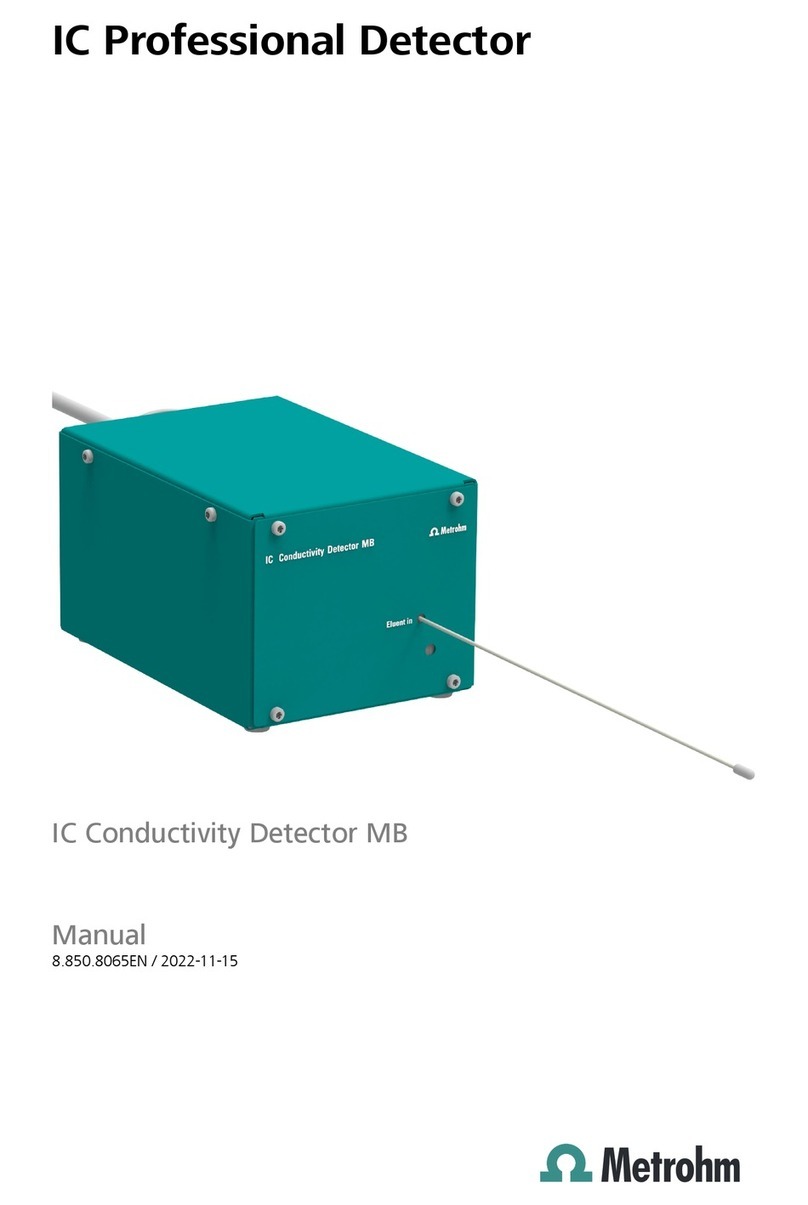
Metrohm
Metrohm MB User manual
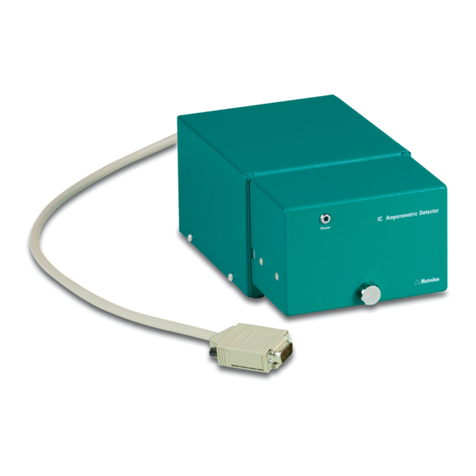
Metrohm
Metrohm IC Amperometric Detector User manual
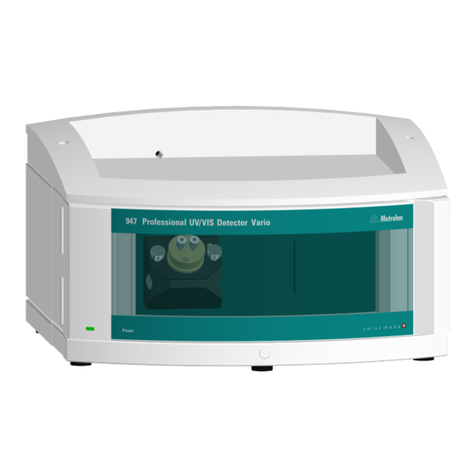
Metrohm
Metrohm Vario-SW 947 Series User manual
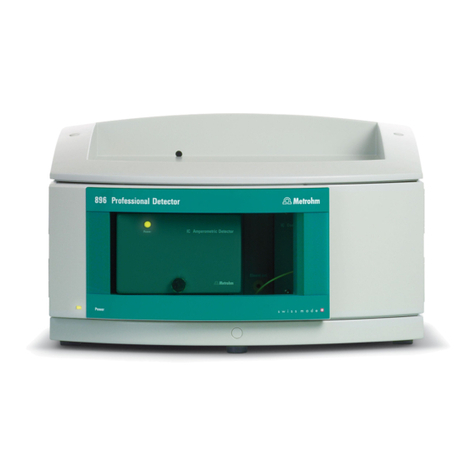
Metrohm
Metrohm 896 User manual
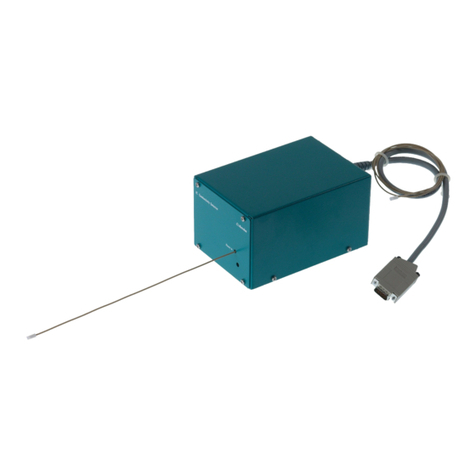
Metrohm
Metrohm IC Conductivity Detector User manual
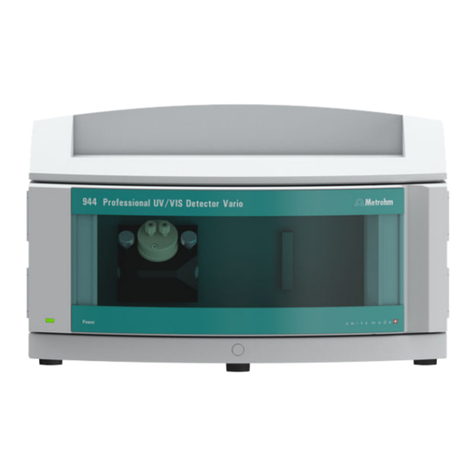
Metrohm
Metrohm 944 User manual

Metrohm
Metrohm IC Conductivity Detector User manual

Metrohm
Metrohm 945 Professional Detector Vario User manual
